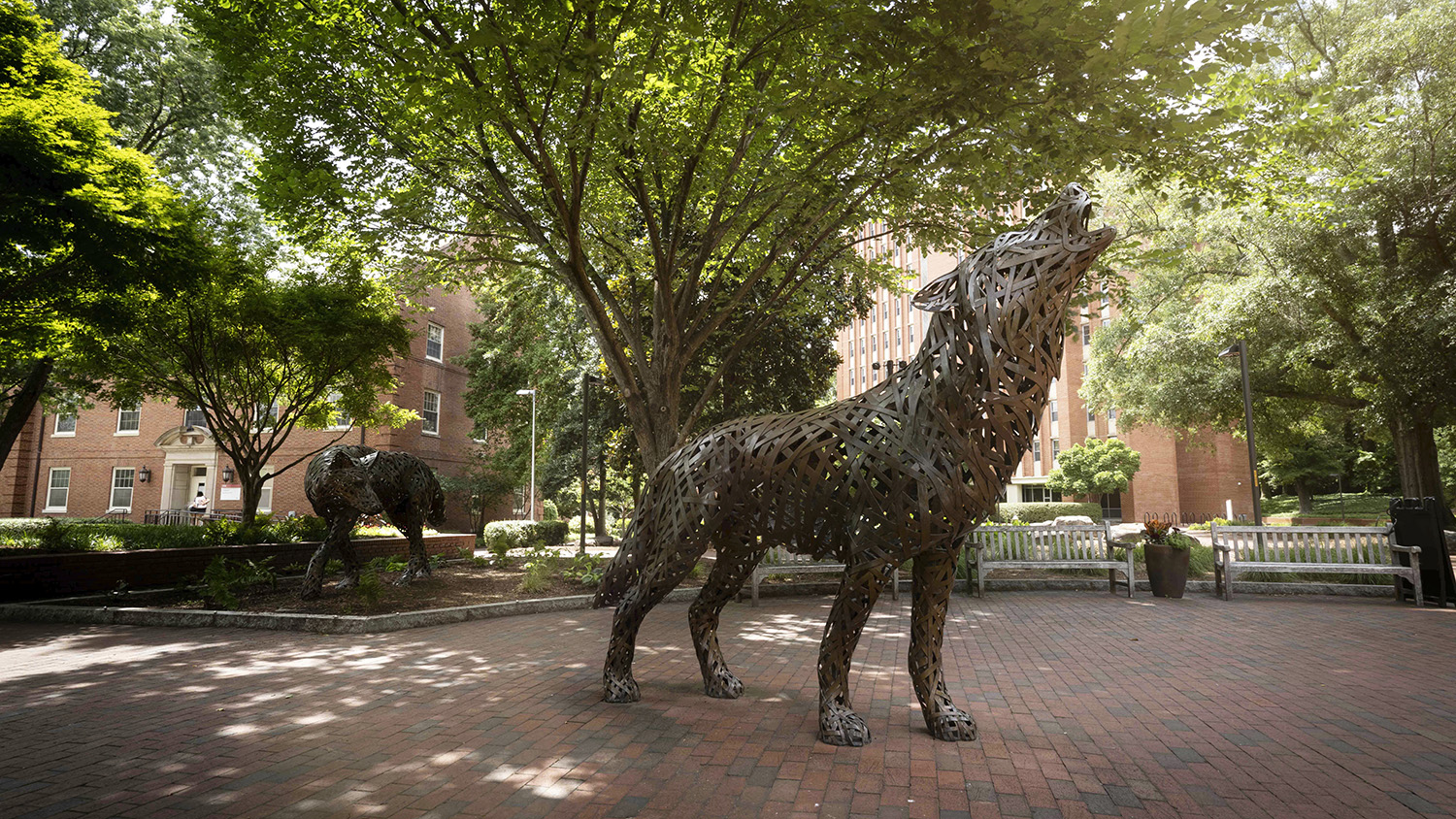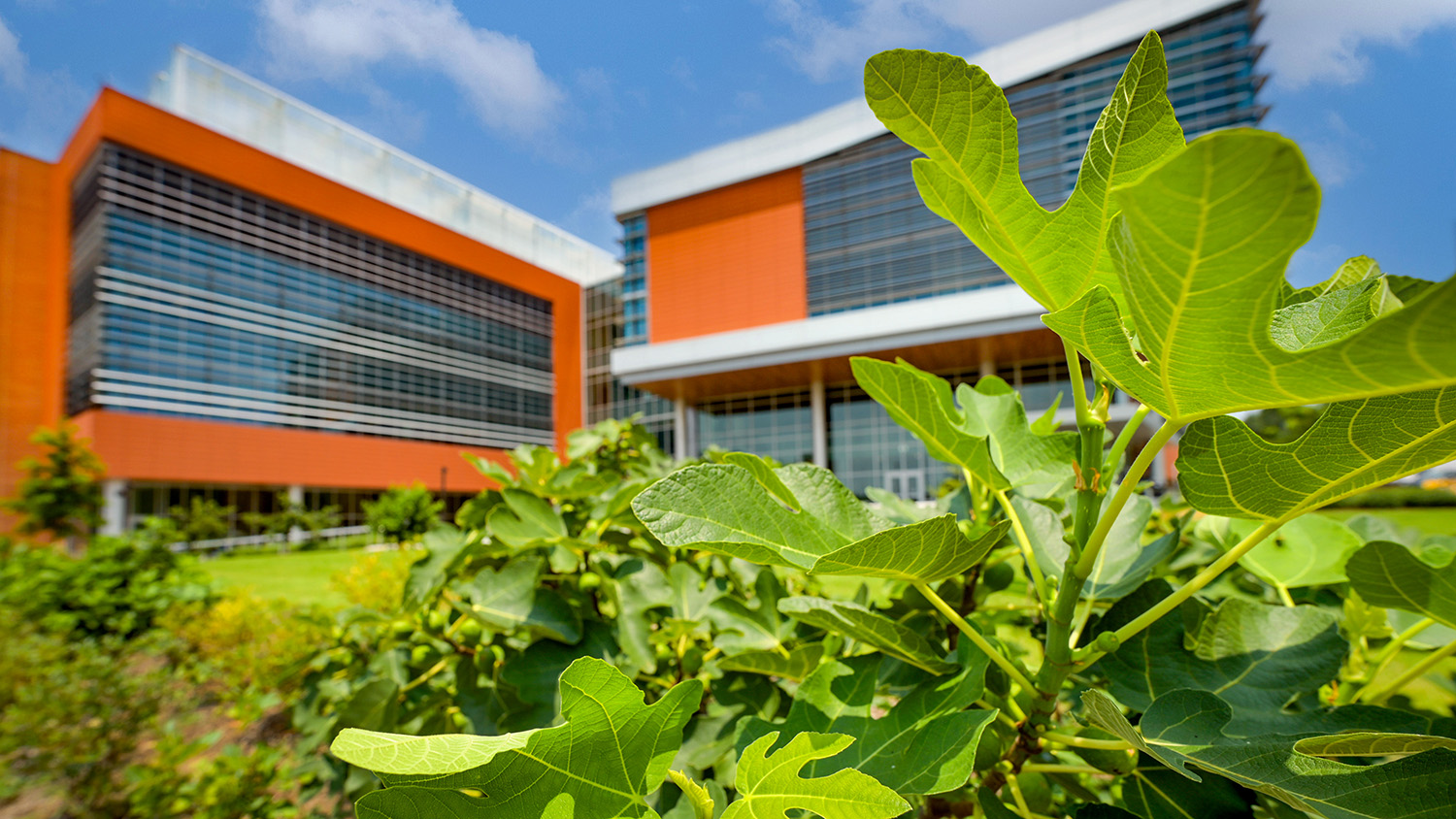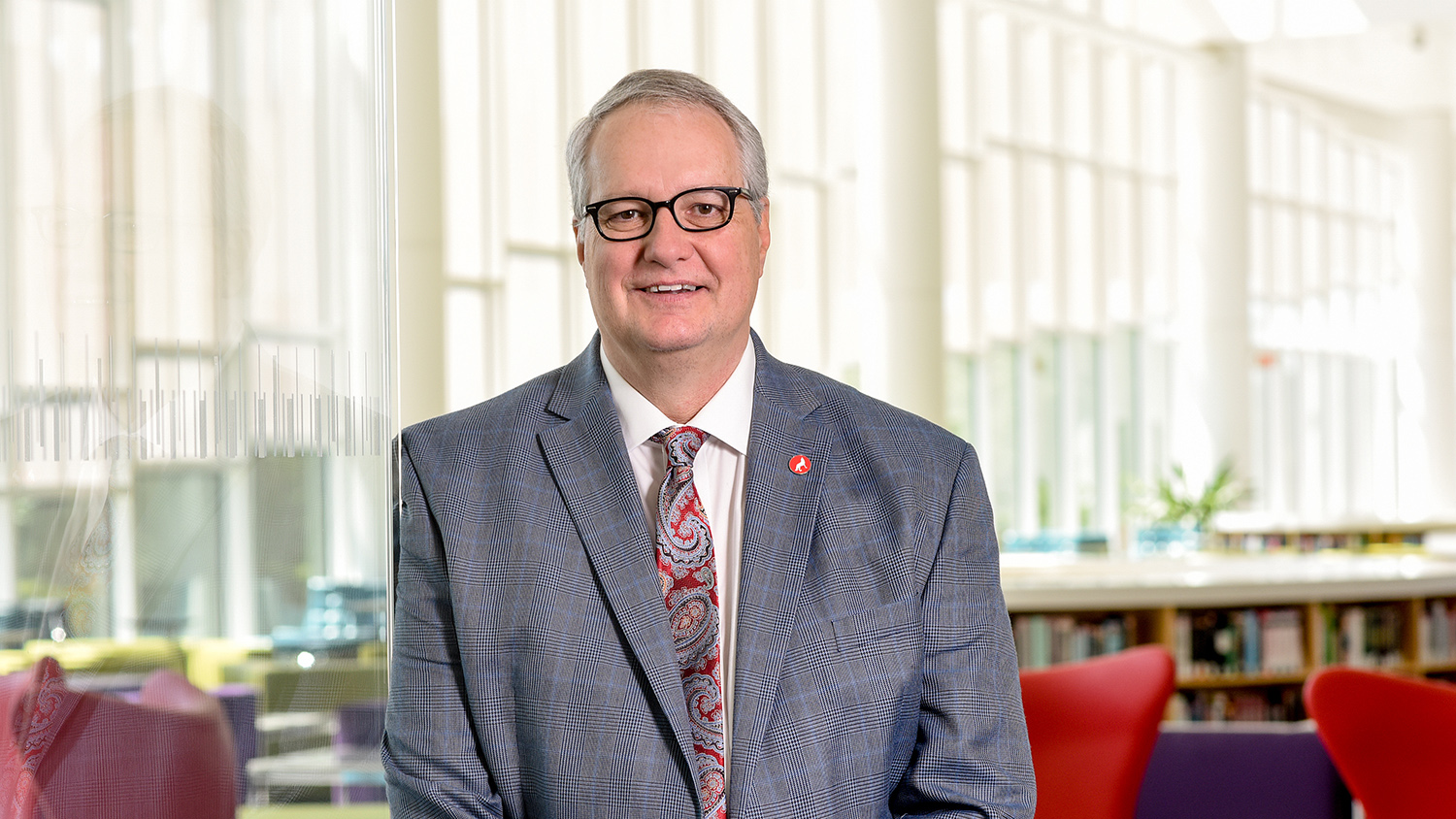Making Science Communication Make Sense
A partnership between NC State and the North Carolina Museum of Natural Sciences is opening new windows on the world of science communication.
Eight researchers at NC State are jointly employed by the university and the museum. Together, they study the history of science, paleontology, genetics, animal behavior and more.
“More than a million people each year visit the museum and, during those visits, see NC State scientists and other scholars in action,” said Rob Dunn, senior vice provost for University Interdisciplinary Programs. “These connections between the university and the museum will become more important as we consider the new challenges that society faces, among them global change, global health and food insecurity, all of which are at the interface of science and society.”
Adrian Smith, a research assistant professor in NC State’s Department of Biological Sciences and head of the Evolutionary Biology and Behavior Research Lab at the museum, is one of those eight. His work is highly visible in several ways; he runs the YouTube channel Ant Lab and conducts much of his research in a glass-walled office at the museum. When visitors walk down the museum’s hallways, they can see the scientist engaging in the work he passionately showcases on social media.
Smith also teaches a course at NC State called Creative Media Production for Scientists, which is open to any STEM graduate student from any field. The class covers the effective creation of online video-based media communicating scientific research.
“The reality of media today is that everyone can be just as much of a producer as a consumer,” said Smith. “We want to better equip young scientists to take advantage of this, to be able to tell their own stories about themselves and their research.”
Now, Smith seeks to elevate how scientists share their work through a new $276,000 grant from the National Science Foundation. The grant will allow Smith to delve deeper into how institutions like the Museum of Natural Sciences can use online digital media to expand their reach, increase their accessibility and preserve their work for future generations.
Digital media as a form of science communication takes advantage of the ubiquity of platforms such as YouTube and TikTok to help scientists tell their stories. When museums and universities harness the power of digital media, they can come alive in an incredibly engaging manner. However, we don’t yet fully understand the ways in which such communication alters how the public understands science. Smith and his team hope to begin to fill this gap.
“This grant is all about how people communicate and take in online messages about science,” said Smith. “Science isn’t just a collection of facts; it is people working every day to try to better understand what it means to be alive on earth today. So, figuring out how we can best communicate that work is what ultimately is motivating our research.”
Selina Ruzi, a postdoctoral scholar with a joint appointment at NC State in the Department of Biology and the museum, will continue working with Smith on the grant-funded research. The grant is a follow-up to Smith’s and Ruzi’s previous work at NC State.
That study engaged participants in watching videos created by researchers talking about discovering a new species of ant. Participants were then asked to complete a survey on the videos, presenters and what they thought about the science and researchers involved. The research found that participants trusted science communicated by the scientists themselves, more than science communicated by a third party, such as a science journalist.
The study built on research on the effects and effectiveness of scientists using digital communications to talk about their own work. Smith, Ruzi and others have been working on the topic for nearly three years, having published one paper that provided a conceptual framework for the new grant.
Nicole Lee, an assistant professor of communication at Arizona State University, worked on developing the grant and participated in related research while she was an assistant professor in the Department of Communication at NC State. As part of the grant team, she offered a social science perspective and experience to the interdisciplinary team.
“This project is important because museum biological collections serve an important role in preserving natural history and facilitating current and future scientific research,” said Lee. “Communicating this value is important for funding and long-term sustainability. Understanding the most effective communication strategies will help museums allocate their limited resources.”
The Importance of Interdisciplinarity
Smith’s research team is interdisciplinary. It includes Smith’s video experience, Ruzi’s experience with insect behavior and Lee’s disciplinary knowledge in the study of communication. The science about which the team will be communicating is also interdisciplinary. Increasingly, scientists conduct their studies in teams that no longer fit inside a single academic department or scholarly discipline.
“We need to do a better job of engaging the public in the process of science,” Dunn says,” And that includes the complexities of working together in teams. Rarely can big societal challenges be solved by a single discipline on its own. Consider the issue of global changes in ecosystems. Comprehensive solutions to pressing issues such as these depend on an understanding of climate, agriculture, human behavior, biodiversity and so much more. Stories about these issues, however, tend to be communicated in a vacuum. Through connecting interdisciplinarity to science communication, scholars can more effectively communicate the complex nature of these challenges.”
What’s In Store
Through both the museum-university partnership and the new NSF grant, Smith hopes to be able to positively impact what museums, and more generally, science engagement with the public, will look like and do in the future. The partnership helps put science on display through communicating research in a tangible, accessible way..
“This is an active place where science is happening. This features the process — not just the end product — of science,” said Smith. “Creative science communication, as is the case with digital media, is like the glass wall here in my office; it is a vehicle through which people can exhibit themselves and their work. In the future, I don’t want it to be just about what you experience in the building, but what you can take home and engage with.”
- Categories:


